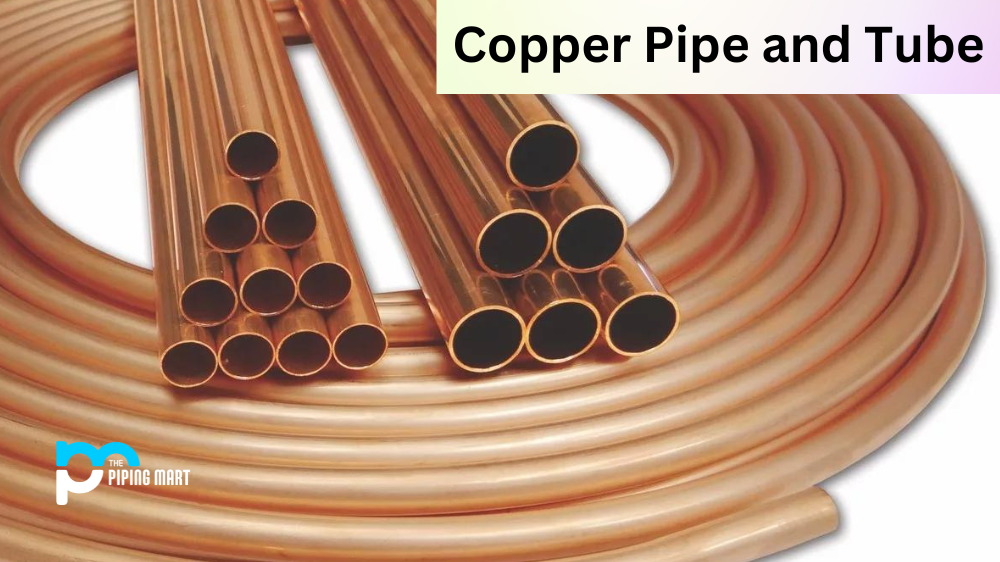Copper is one of the most popular materials used in plumbing, but it cannot be very clear to differentiate between copper pipe and tube. Both are made of copper, but each has distinct characteristics that make them suitable for different applications. Let’s explore what makes these two materials unique, so you can decide which is suitable for your needs.
Copper Pipe vs. Tube: Usage & Characteristics
The main difference between copper pipe and tube comes from usage and characteristics. Copper pipe is typically used for plumbing, while the copper tube is used in heating and cooling systems in residential, commercial, or industrial settings. However, both types of copper piping are highly resistant to corrosion and do not require additional treatment before installation.
Copper Pipe:
Copper pipes are hollow cylinders that range from 1/8-inch up to 8-inch in diameter. It is usually sold in rolls or lengths and can be cut down with a saw or pipe cutters. The ends of the pipes must be threaded before they can be attached to another piece of pipe or a fitting. This type of piping is best suited for projects where there will be no movement or vibration because the connection points may become loose over time if exposed to those conditions.
- Copper pipe is typically used for plumbing applications, while copper tube is generally used for electrical applications.
- Copper pipe is made from a single piece of copper, while the copper tube is made from multiple pieces of copper that are welded together.
- Copper pipe is typically less expensive than the copper tube.
- Copper pipe is available in various sizes and lengths, while copper tube is only available in a limited number of dimensions.
- Copper pipe can be cut with a hacksaw, while copper tube must be cut with a tubing cutter.
Copper Tube:
Copper tubes are also hollow cylinders, but they are smaller than copper pipes—generally ranging from 1/16-inch up to 2-inches in diameter—and come pre-cut with threads on each end so they can be attached directly to other components without any additional preparation. This makes them a great choice for projects with movement or vibration because the connections remain more secure over time than those made with copper pipes. Additionally, copper tubes can handle higher temperatures than copper pipes, so they are often chosen for hot water lines in homes or businesses and air conditioning systems in industrial facilities.
Conclusion:
When it comes to choosing between copper pipe and tube, it’s essential to consider the application you need it for before making your decision. Copper pipe has been around since ancient times but has become increasingly popular due to its affordability and ease of installation. The copper tube may be the better option for applications requiring faster installation times or greater resistance against movement or vibration due to its pre-cut threads on each end that allow components to attach quickly and securely without any additional preparation required. No matter which type of material you choose for your project, both provide excellent properties that make them ideal solutions for many residential and commercial applications!

Pipingmart is a B2B portal that specializes in metal, industrial and piping items. Additionally, we share the latest information and information about materials, products and various types of grades to assist businesses that are involved in this business.




